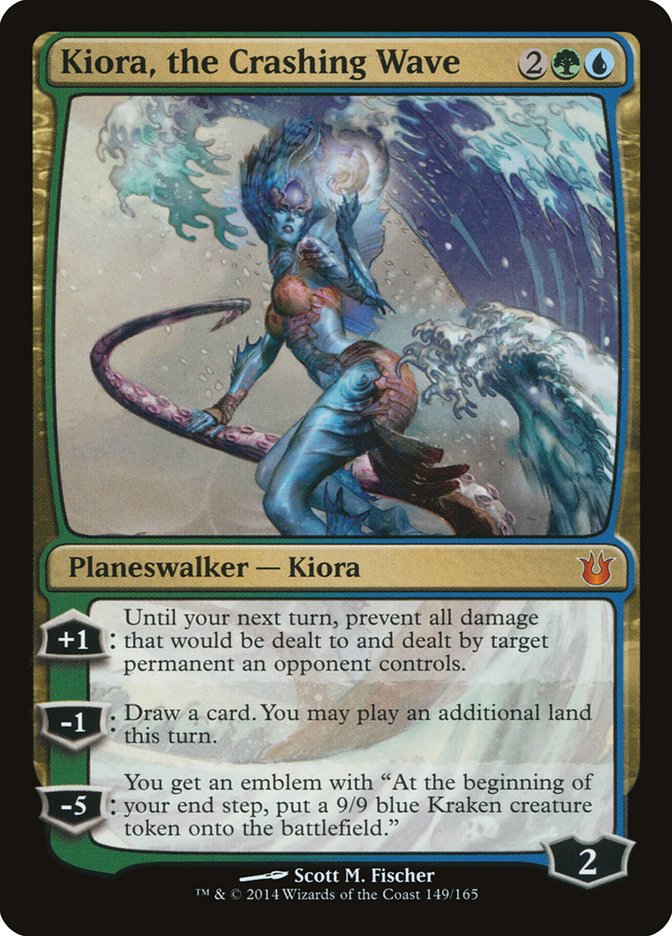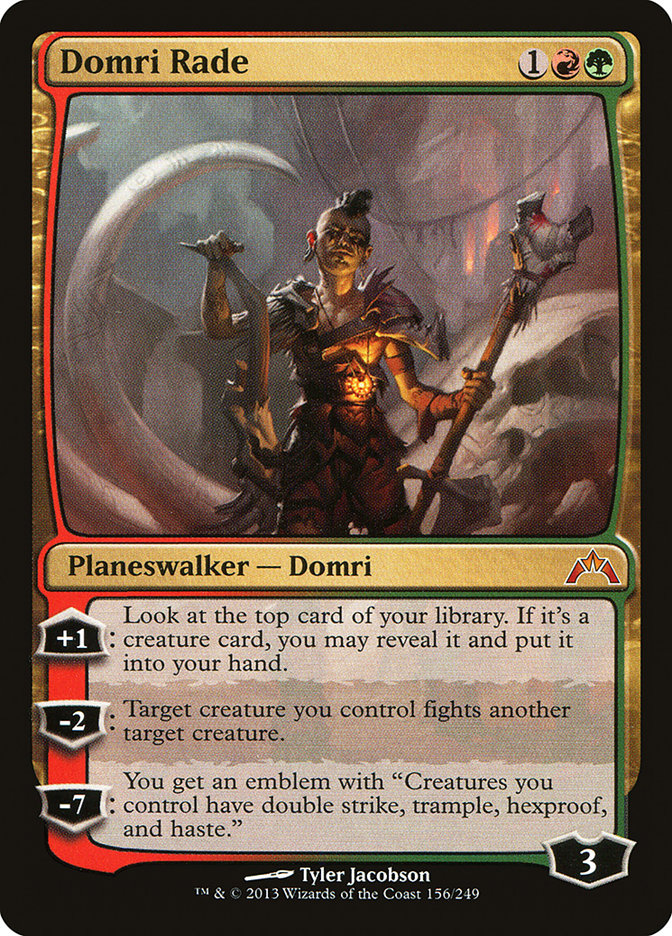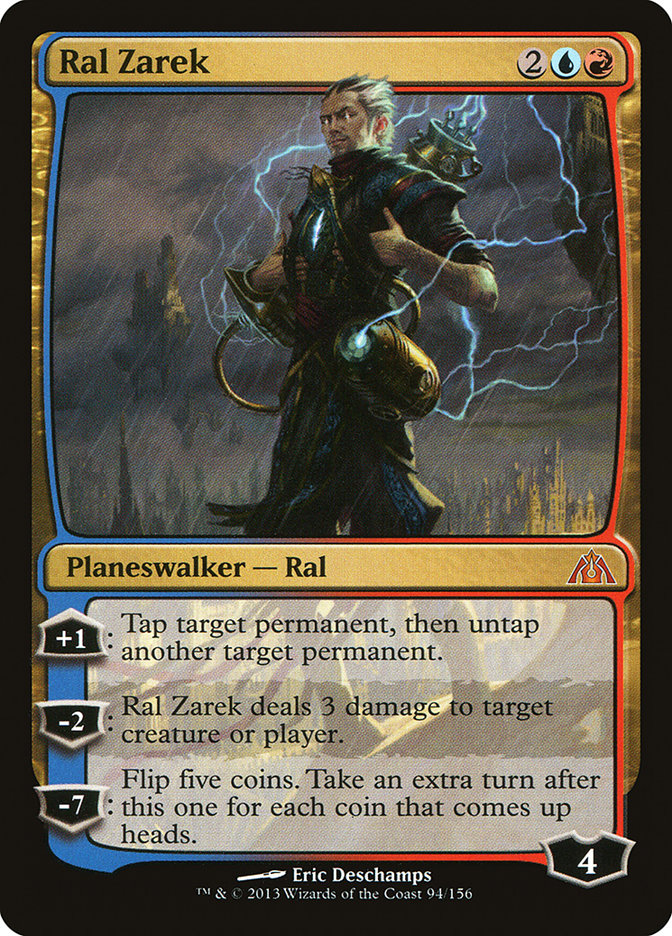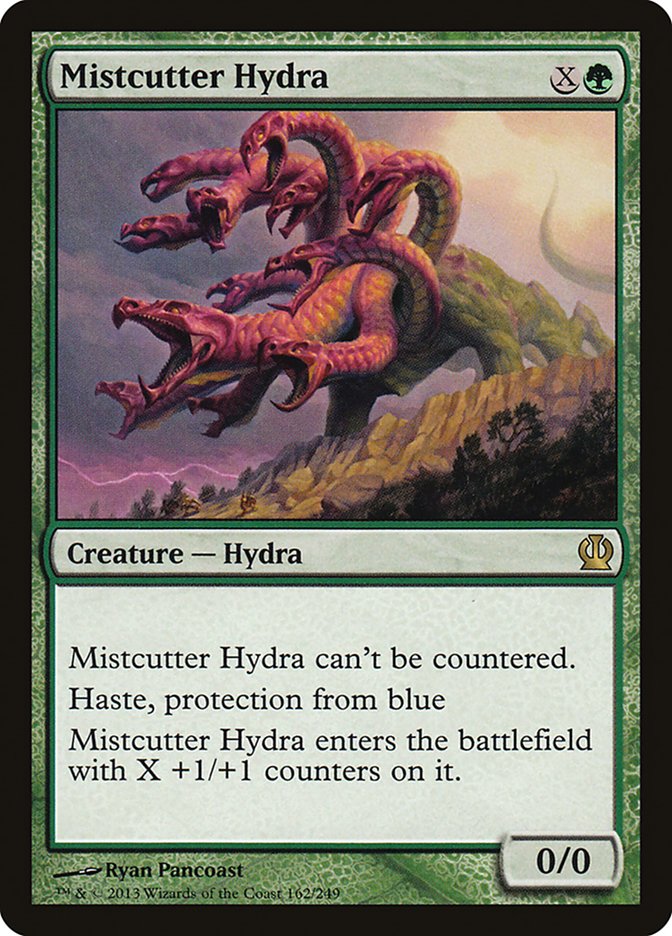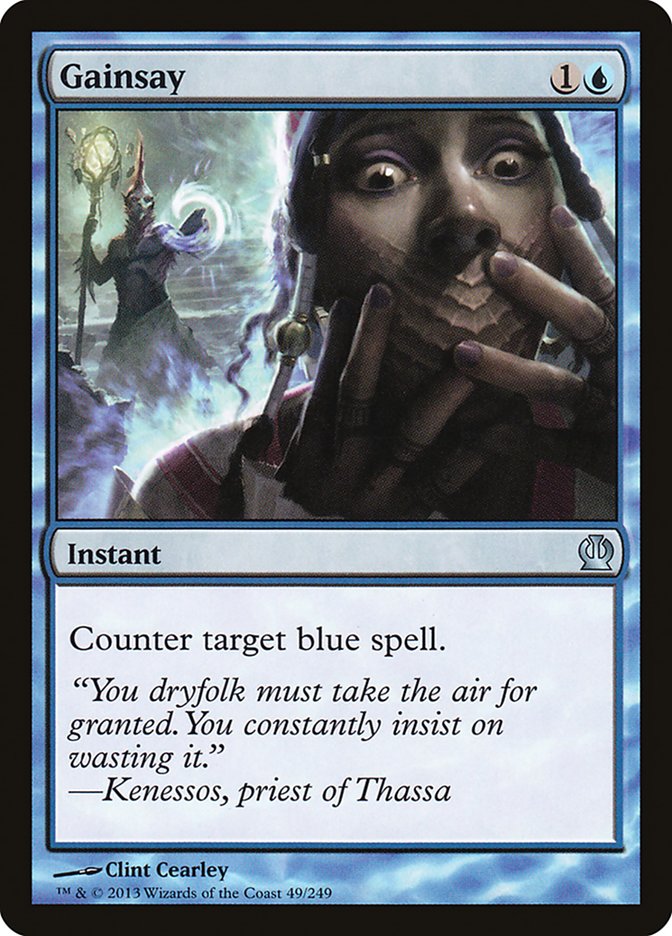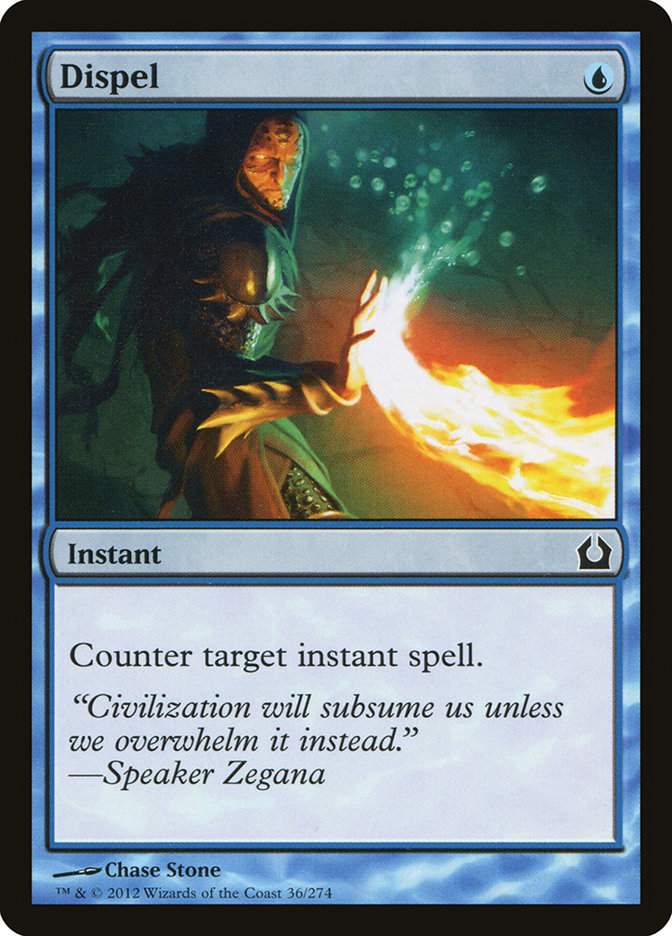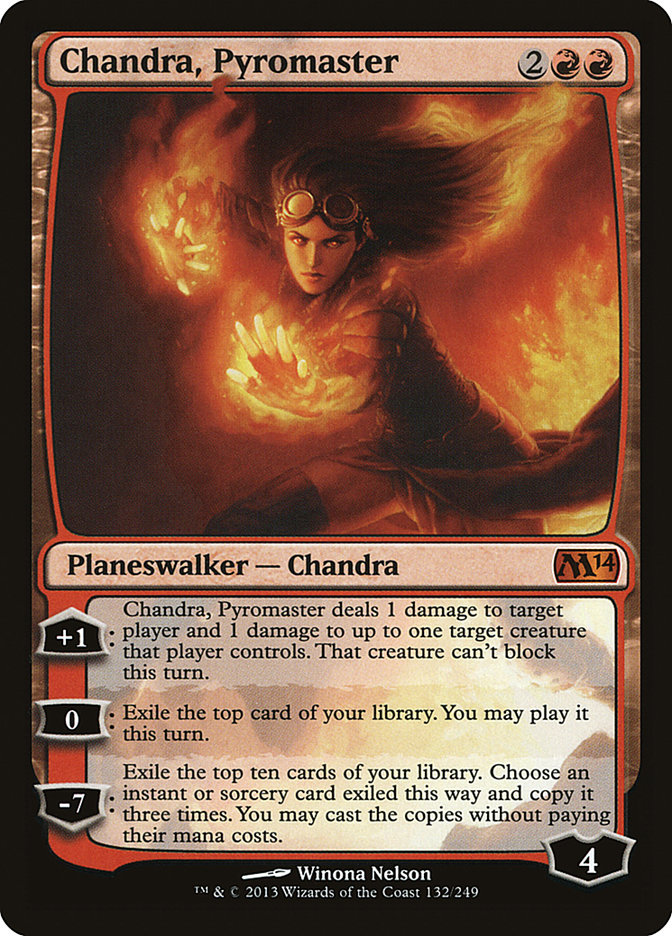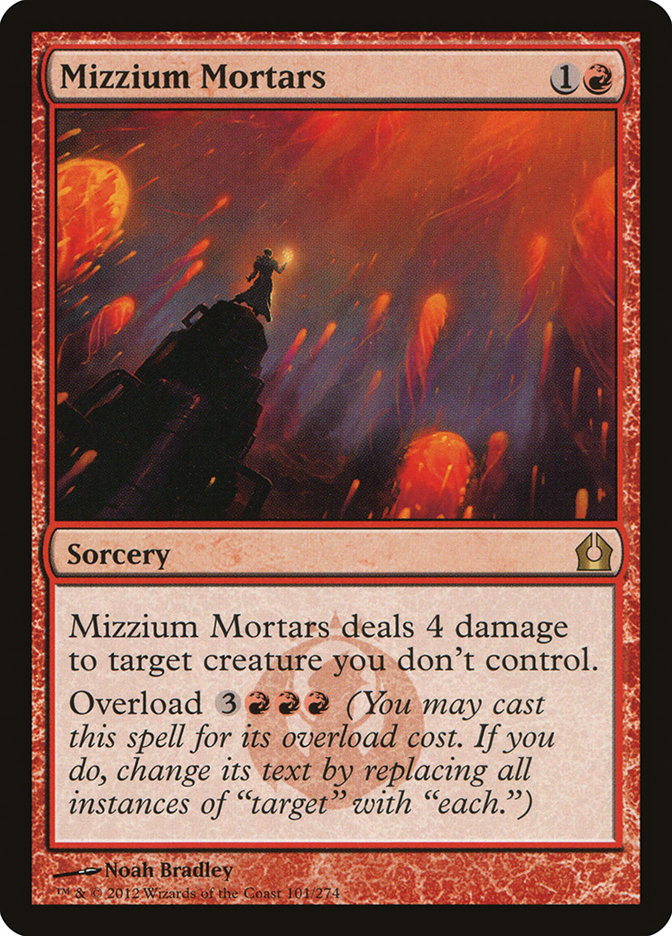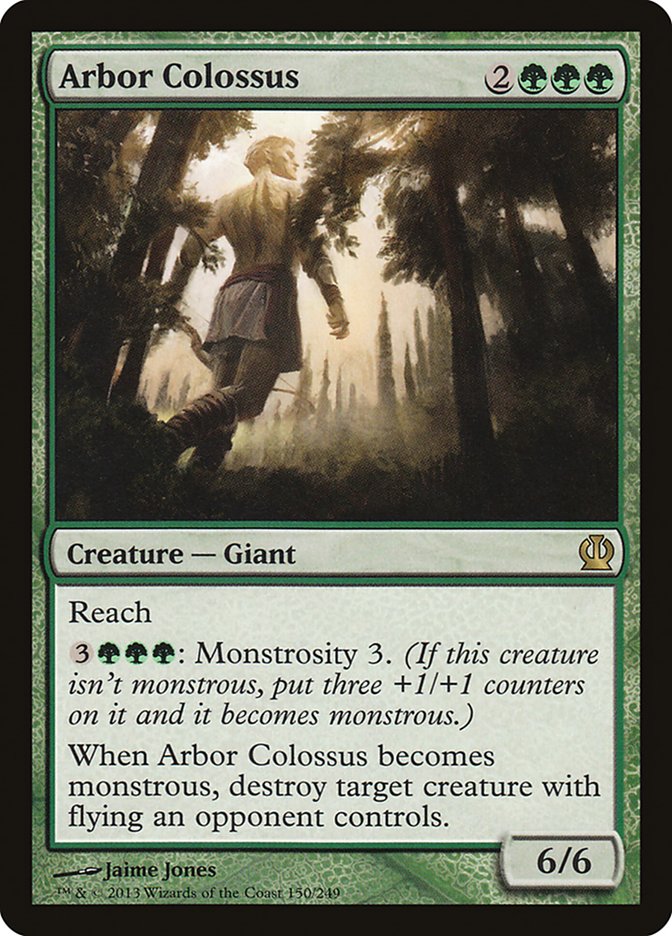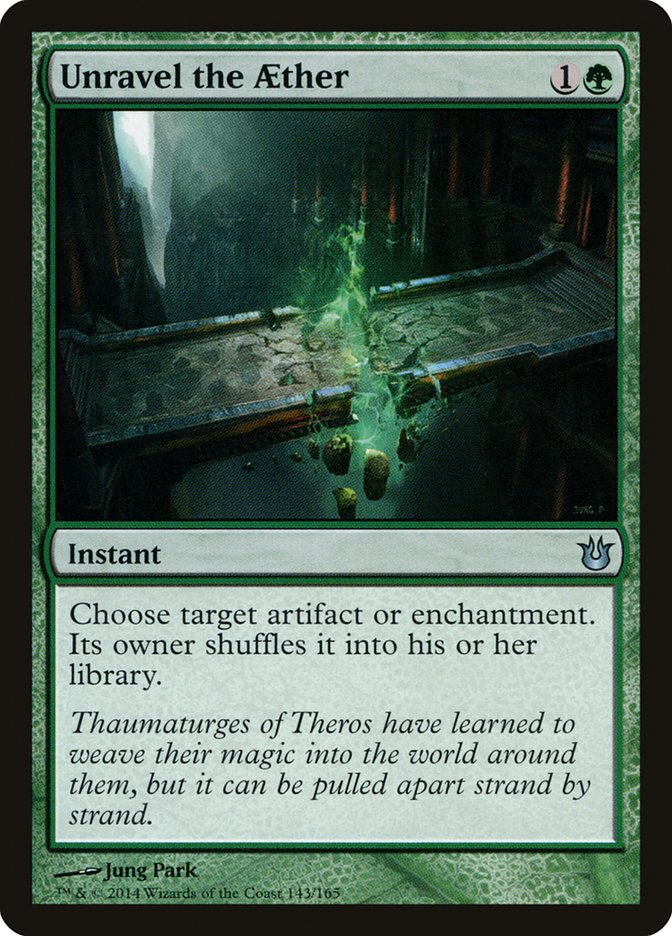So apparently this is a thing:

And apparently RUG Monsters is also a thing.
I went to nearly all of the PTQs I was able to this season. Between them, SCG Opens, and other cash events, I’ve racked up a few Top 8s (including another one this past weekend at a 5K in Chicago), some near misses (9th at #SCGNASH, where I misregistered my deck to get a game loss), and overall a ton of hot finishes all with U/W Control. I’ve seen a lot of decks over the course of the season, but one deck really blew my mind when I saw it in the Top 8 with me in a PTQ in Illinois.
Paul Morelli blasted his way into the Top 8 of that event and was near the top of the tables at last weekend’s 5K in Chicago with a RUG Monsters deck of his own design. During the Chicago event, a friend of his joked that I should write my article about his deck. I thought it would be a great topic, but he and I never connected to be able to make it happen. In essence, this is an exercise in reverse engineering.
If you look at the winning Monsters lists of all varieties, you tend to see the following:
4 Elvish Mystic
3-4 Sylvan Caryatid (usually 4)
3-4 Courser of Kruphix (sometimes 0)
4 Polukranos, World Eater
4 Stormbreath Dragon
3-4 removal spells (Mizzium Mortars or Dreadbore)
4 Domri Rade
23-24 lands
This leaves eight to twelve slots to play with. When you’re looking at, say, Jund Monsters, these slots are usually going to be Reaper of the Wilds and potentially a small smattering of other support spells that are common to G/R Monsters as well.
What are the incentives to play RUG Monsters?
Here’s the one that kind of blew my mind a little:
At one point I saw Paul with all three of these cards in play, and it actually felt gruesome what he was doing with them. Any combination of the two is incredibly powerful however you put them together. But Kiora, the Crashing Wave seems like it adds an important piece of redundancy. In addition, while I’ve generally been unimpressed by Kiora in controlling decks, in a midrange deck like this it manages the neat trick of making it feel like an alternate angle of attack and actually making potent use of the Explore ability of Kiora.
Without just going into the absurd card advantage situation that can happen with the conjunction of these cards, it was also just impressive watching the deck have an additional four-mana card that can feel as high impact as a Polukranos, World Eater. Without Paul’s decklist, I merely replaced a Xenagos, the Reveler with a Kiora, the Crashing Wave, but the more I played the deck, the more that I thought I wanted more. Pretty quickly I was at four, and I haven’t back.
Another intensely impressive portion of Paul’s deck was the access to mana acceleration that he had compared to other decks. While he had the eight cards everyone else did (Elvish Mystic and Sylvan Caryatid), Kiora, the Crashing was yet another touch of ramp, and even beyond that he boarded Ral Zarek!
I’ve seen a lot of people try to use Ral Zarek, and they’ve never quite made me feel like it’s the right way to go. Well, at least until I saw it in this deck. I saw Paul drop a Mistcutter Hydra for five on turn 4 off the back of Ral Zarek, and then later in the game he used Ral Zarek to deal the last six damage against a hapless Esper Control player. And then on top of that, he had Gainsay. Good lord!
Especially with the emergence of Esper Control, a deck that can actually take a strong alternate path toward victory via pushing card advantage and planeswalkers without losing the aggressive element is well positioned. One of the dangers for any Monster deck is that despite having a lot of scary creatures, the mana acceleration that the deck uses to get them out quickly means that an untimely Supreme Verdict can leave only Domri Rade on the table. More planeswalkers puts even more pressure on opposing Detention Sphere.
As Kent Ketter said in his interview at #SCGSTL, the third color in Monsters can essentially be a freeroll. Working the mana a little bit can give you a stable third color, and with Kiora, the Crashing Wave essentially taking the place of Reaper of the Wilds, you practically have the deck completely built! One of the last pieces of the puzzle was recalling Paul Morelli’s success with bizarre card Prophet of Kruphix. I liked the card an incredible amount when it got into play, but I did notice that it had some diminishing returns. I’m not sure how many Paul was playing, but I worked in a single copy, was happy with it, and never found myself with the frustration of an extraneous copy. In many ways, Scavenging Ooze shares this element of diminishing returns, so one copy it is.
Here’s my current version of Paul Morelli’s RUG Monsters, reverse engineered as best I could and including my own ideas of how to make sure the deck has an engine that purrs so smooth that it’s a pleasure to pilot:
Creatures (25)
- 1 Scavenging Ooze
- 3 Ghor-Clan Rampager
- 4 Elvish Mystic
- 4 Polukranos, World Eater
- 4 Sylvan Caryatid
- 4 Stormbreath Dragon
- 1 Prophet of Kruphix
- 4 Courser of Kruphix
Planeswalkers (8)
Lands (24)
Spells (3)

The first thing that I tried to respect when I built this deck and sideboard is the success that I saw Paul Morelli have with it. According to Paul, the deck largely came out of a conversation he had with Caleb Durward, and Paul had spent some time honing the choices. I’m sure he’s played far more games than me with the deck, and as a result some of the card choices in the board that I’m less certain of I’m simply not going to touch because I expect he knew what he was doing in selecting them.
That being said, I don’t actually have his list, so this list and sideboard reflects choices that I think make sense combined with choices that I know he had success with. I’ve already talked about the maindeck, so let’s touch on the elements that I think are very powerful in the sideboard.
One of the things I really liked in Paul’s sideboard was access to both Mistcutter Hydra and countermagic. When I finished 37th at GP Louisville with BUG Midrange, I also employed this combination of cards to great effect. A part of it is that while Mistcutter Hydra is a really good card, sometimes it ends up not helping you in a tempo fight. Actually having Gainsay can be incredible though.
Gainsay is just one of the best sideboard cards that’s available in Standard right now. Being able to say "no" to a Sphinx’s Revelation or a Master of Waves is a really big deal. Especially in the Mono-Blue Devotion matchup, one of the things that happens again and again is that the blue deck is able to create a critical turn with cards like Tidebinder Mage, Cyclonic Rift, and Rapid Hybridization that turn the game over via tempo advantage. Stopping just that single critical card can really be devastating for them.
Dispel is another great card in this deck for similar reasons. One mana is not much, and this deck is very able to create, say, six mana very easily. Versus Esper Control, for example, being able to lay a Stormbreath Dragon with mana open to counter their Dissolve or their Doom Blade / Ultimate Price / Celestial Flare is huge, especially if you don’t end up needing it, and later on you can stop their Sphinx’s Revelation for some large number. Dispel can also be really important against decks like Burn, allowing you to still be active with a powerful threat and only need a single mana open to stop a Boros Charm or Warleader’s Helix.
Chandra, Pyromaster is already a card that people like Kent Ketter have made use of to good results in G/R Monsters. In this deck’s sideboard, it can be a part of the plan to shift into a RUG Planeswalkers deck. I only included a single copy because there are many ways that the card functions as a Kiora, the Crashing Wave clone; like Scavenging Ooze and Prophet of Kruphix, though, there are definitely some diminishing returns. If the deck didn’t have Kiora, the Crashing Wave, I’d run a second copy in the board, but as it is I prefer only a single copy.
Ral Zarek is really impressive in the board when you’ve fully switched gears. As a mana accelerator, it’s yet another Kiora, the Crashing Wave analog. Unlike Chandra, Pyromaster, though, this ability is so potent that I think it’s worth the extra copy. In addition to being a good card in any of the matchups where you’re looking to power out an expensive play, Ral Zarek can be a good card when you’re fighting against Mono-Blue Devotion, shooting Nightveil Specter and Tidebinder Mage while helping you have the mana for absurd Mistcutter Hydra action.
Plain and simple, you want four Mizzium Mortars in your 75 in Monsters. Whatever kind of Monsters you are, you want to be able to have this card in practically all of the creatures-based matchups, even the mirror. "Even" the mirror might seem funny, but when you’re dealing with so few ways to kill a Stormbreath Dragon other than having your own Stormbreath Dragon, getting rid of the Dragon is incredibly important. If you’re able to overload it, shooting down Sylvan Caryatid and Courser of Kruphix can be utterly ridiculous. Against other creature decks, Mortars is just an incredibly efficient card that can solve a lot of issues. Friends don’t let friends skimp on Mortars.
Having a huge monster can be a big deal. When you’re facing opposing copies of Desecration Demon or Archangel of Thune, you’re going to want to have a huge Arbor Colossus in your deck. Colossus is good whether or not they have the other creature, but it’s also a particularly good answer when they do. RUG Monsters struggles a bit less with those cards because of four copies of Kiora, the Crashing Wave, but it doesn’t hurt to have a card that can actually just take out the problem entirely.
In addition, Arbor Colossus is a great card in the mirror as well, coming down as a huge creature for fairly cheap and turning an opposing Stormbreath Dragon into mincemeat. I looked at Kent Ketter’s lists a lot when it came to tuning this deck’s board, and I think it’s telling that he continued to make use of this card up until the point where it became Cedric Phillips’ list and had options in black to fill this slot.
Progenitor Mimic is just an absurd card in the sideboard against any other midrange deck. The fight in midrange-on-midrange battles usually involves just having the most relevant board position. Progenitor Mimic ends up churning out horrible creature after horrible creature in these fights and pretty much ends the game in any meaningful sense within two or three turns. If you have access to this card, you have to make use of it.
This sits as a lonely one-of, in large part because the best use for it is answering a God or a Detention Sphere and this deck oftentimes doesn’t need to be engaged in that fight the way that other Monster decks sometimes are. This deck already has a lot of reactive cards, and going too far down that path can be a recipe for disaster. That being said, I still like access to the card because it can be really relevant. If you really feel like you need a second copy of this, you could shave a Dispel for it, but I don’t recommend it.
So what does the deck look like when it’s fully sideboarded for the control matchup? The particular specifics can vary a little bit, but the spells basically look like this:
3 Elvish Mystic
2 Ghor-Clan Rampager
3 Polukranos, World Eater
4 Courser of Kruphix
2 Mistcutter Hydra
2 Arbor Colossus
4 Stormbreath Dragon
2 Dispel
2 Gainsay
1 Unravel the Aether
1 Chandra, Pyromaster
2 Ral Zarek
4 Kiora, the Crashing Wave
4 Domri Rade
24 lands
As you can see, I’ve shaved down the fast mana to only three copies of Elvish Mystic and let the planeswalkers carry the rest of the water there. This is because Supreme Verdict is a huge deal and you need to be a bit more resilient to that card. In addition, gone are Scavenging Ooze and Mizzium Mortars, which probably seems obvious in that matchup. I’ve also cut a single Polukranos, World Eater and Ghor-Clan Rampager, going to three and two respectively, to help fit in the remainder of the sideboard threats and the five instants. If you prefer the full set of four Polukranos, just cut into Ghor-Clan Rampager, but, I like to have the ability to credibly threaten a kill.
Even with only twenty creatures, Domri Rade still feels good, though obviously Mr. Rade would appreciate a few more creatures to really shine his brightest. Even without that brightest shine, though, with the help of Courser of Kruphix and the non-Rade planeswalkers, it’s still worth it to run the full set of four. After board your deck feels really different in the angles with which it can attack, but at the same time you still have the root of the deck, which can present a huge monster fast and take it down.
I won’t be playing this deck this weekend at Grand Prix Cincinnati. I think the deck is very good, but at this point I’ve put in so many hours playing U/W Control that I don’t think I could in good conscience change over to another deck. I’ve also been working on a fabulous Rakdos Midrange Aggro deck, but like RUG Monsters, even though it’s good, I’d rather place my trust in the hundreds of hours I’ve put into U/W Control.
There are a lot of great options for tournaments this weekend. A few hours away there is a PTQ for PT M15 in Minneapolis along with a GPT for GP Minneapolis run by Legion Events at the Fantasy Flight Event Center. There is also an SCG Open Series in Los Angeles. But I’ll be duking it out in Standard at GP Cincinnati, rocking out to my byes and sleep-in special. See you there!

